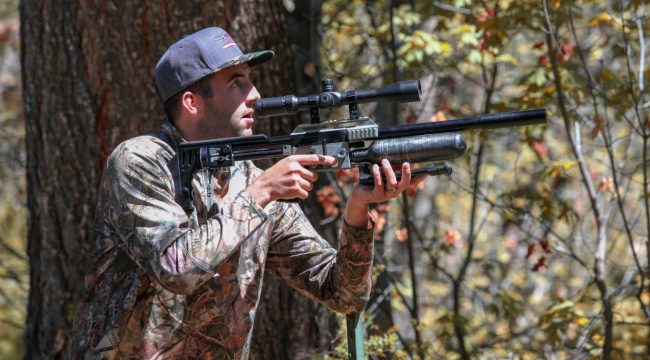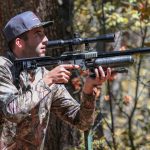Let’s start by breaking it down. Airguns are highly effective for hunting, whether you’re after small game or large. They also offer unique advantages for hunters seeking to broaden their outdoor experiences. In this article, we’ll explore the key benefits of airguns over traditional firearms and also touch on a significant drawback. Ready to learn more? Let’s begin.

Did You Hear That?
Have you ever experienced the practicality of shooting a suppressed high-powered firearm like a 6.5 or .308? It’s not just about the “cool factor”; it’s a game-changer. Shooting suppressed is not only easier on the shooter and those around you, but it also enhances your effectiveness when hunting. It’s a practical and efficient way to hunt. But unless you want to go through all the paperwork, time, and cost, it’s not something many firearm owners ever get to enjoy. However, with airguns, you can experience this without the hassle.
It’s interesting that the UK, where you need a firearms license to own anything that produces more than 12 foot-pounds, not only allows but strongly encourages the use of suppressors. Whereas here in the States, even though we have a lot more flexibility, firearm suppressors are highly regulated.
Fortunately, at the time of writing this article, airgun “moderators,” as we call them, are not regulated at the federal level. But please be sure to check your state and local laws because they may have additional limitations and restrictions. Generally speaking, however, having a moderated airgun is going to be a great way to go. You can get a whole lot of power and accuracy without the noise.
Did You Feel That?
Most airguns have little to no recoil, but even smaller caliber firearms can give shooters a reasonable kick. Heck, you are essentially holding a controlled explosive device to your shoulder and touching it off. So, where firearms all have noise and recoil, that is not always the case with airguns.
Now, as you get into large caliber airguns, things start to change. Airguns like the AirForce Texan and the Umarex Hammer can certainly deliver a pretty decent push to the shoulder, but it’s different than what you’ll get from a high-powered firearm. It’s gentler and develops more slowly, i.e., it’s more of a push than a sharp shove. For folks who don’t like noise or having to deal with recoil, airguns can be a much more enjoyable experience at the bench and in the field.
How is Your Wallet?
When it comes to costs, airguns can be more expensive to get into initially. But for shooters who like to shoot, that pendulum will swing back the other way in a hurry. Your typical 500-count tin of .22 cal pellets will run you between $12 and $21, depending on the pellet. There are outliers on either side of those numbers, but you get the idea. A 500-round brick of .22lr rounds is going to run you about $90 for the affordable stuff. If you want match-grade ammo, then expect to pay a lot more. Once you are set up with your airgun and your required accessories, you’ll be able to shoot a lot more often for a lot less money.
What’s Behind Your Target?
The last key benefit we’ll touch on with this article is safety. Airguns should always be treated with the same respect as firearms. But the reality is that they have a fraction of the power and range of most firearms. Most “off the shelf” airguns generate well below the power of a .22lr. Now, when it comes to big bore airguns and airguns specifically made for big game, they can deliver serious lethality (up to 800+/- FPE) at long range. However, they still don’t compare to even a basic .223, which averages around 1200 foot pounds and is effective out to 400 to 600 yards. There’s really no comparison.
The beauty of airguns being less powerful than firearms is that they are suitable for more environments and safer for new shooters out in the woods. Less velocity and less power mean that there’s less chance of a round going 1000 yards, causing injury or property damage, or passing through the game and doing the same.
Any Drawbacks?
We’ve looked at all the benefits, and to be fair, we should look at one drawback. It’s the opposite side of the coin from our last part about power and range. Hunting with airguns will require you to be more of a “hunter,” as you’ll need to get close and be very precise with your shots. An airgun’s lethality rests in its accuracy and the ability of the shooter to get in close and make the best shot. Transitioning from hunting with firearms to airguns can be a real challenge for most long-time hunters. It’s worth the effort and it will open up a whole new world of possibilities, but it does take more skill and patience to see success.
Got Questions?
If you have questions about what airguns are best for the type of hunting you’d like to do, just give us a call. We can help you get the right setup for your next adventure.
